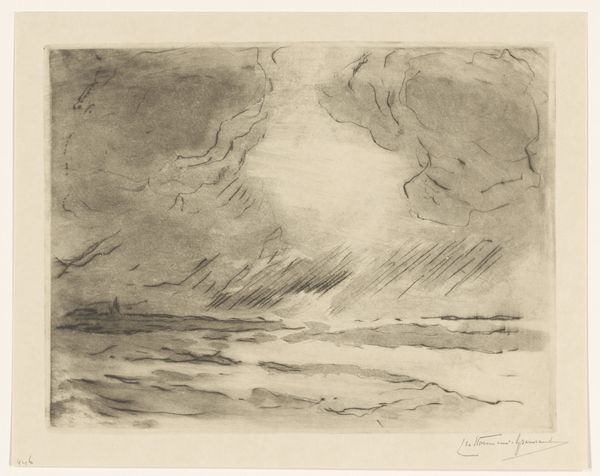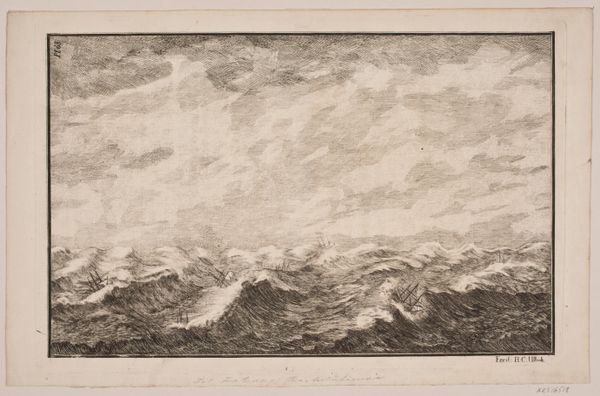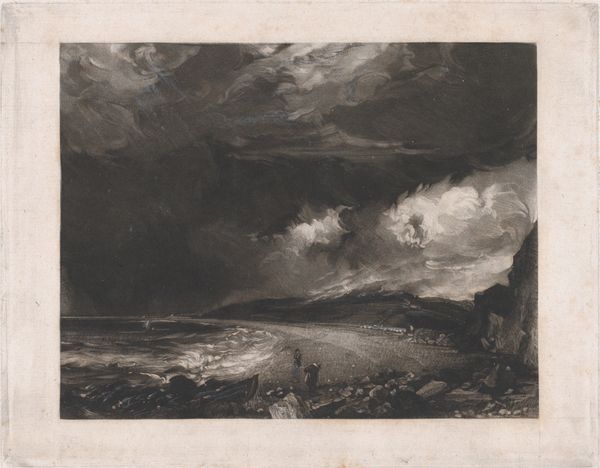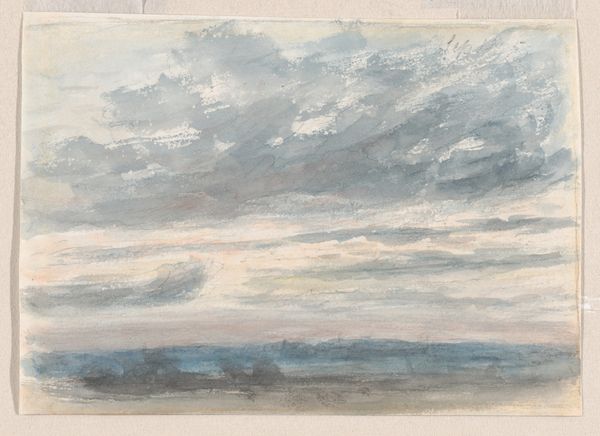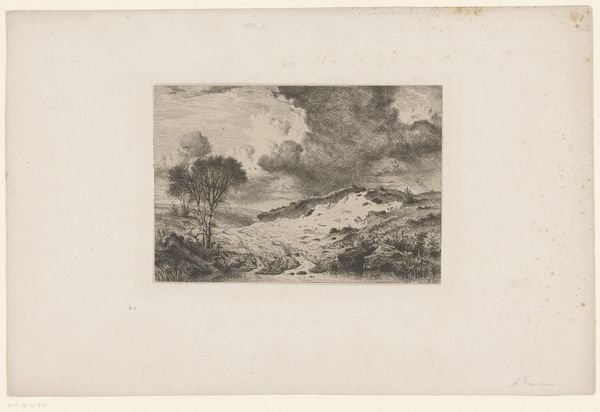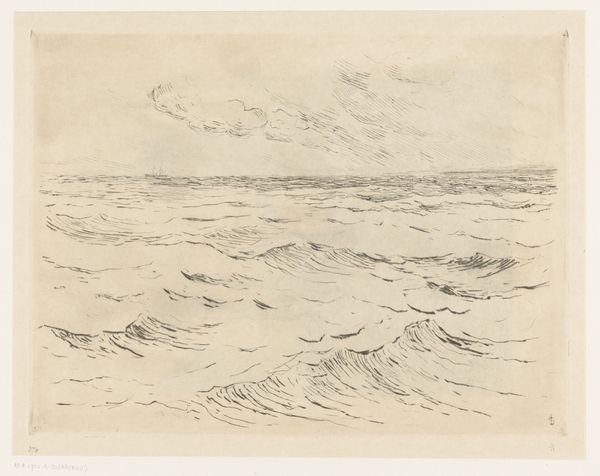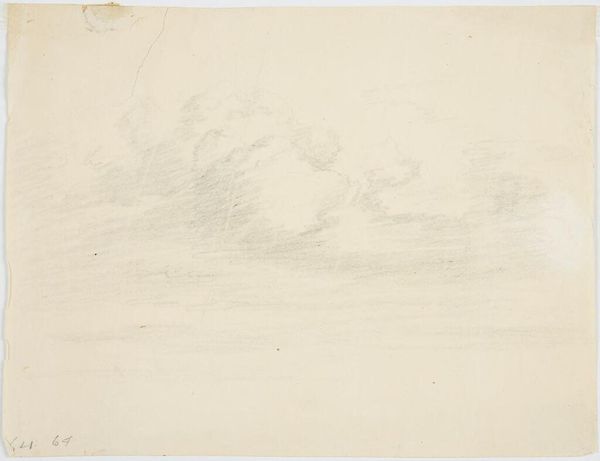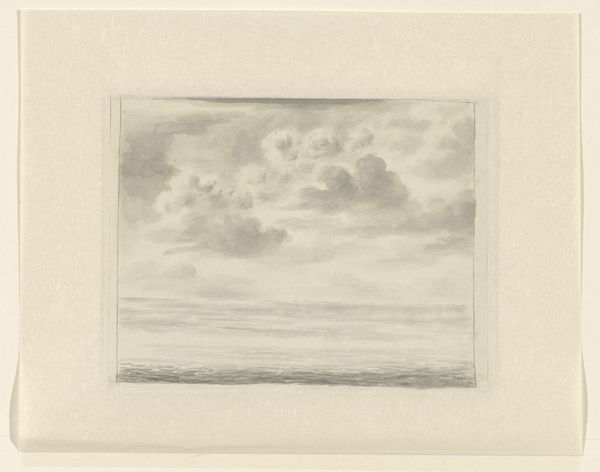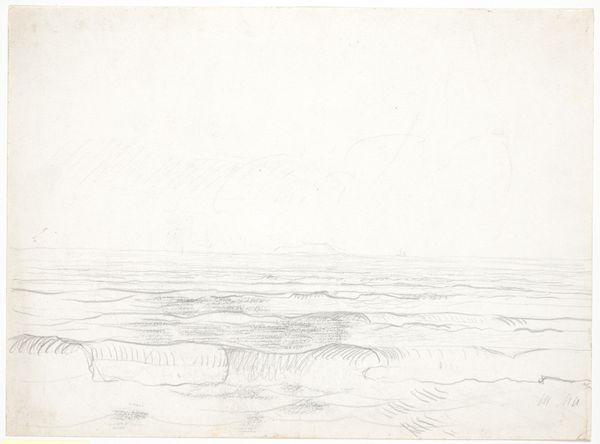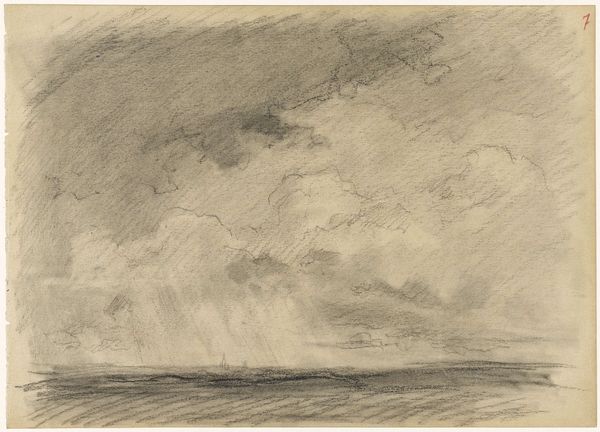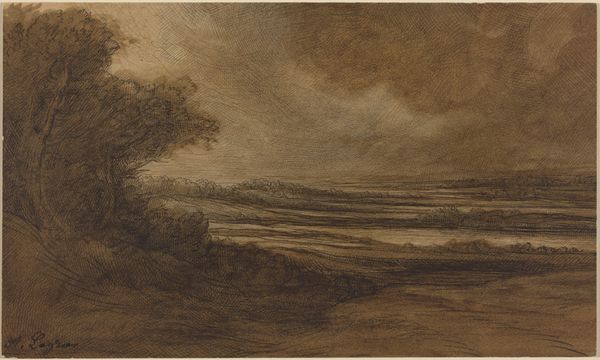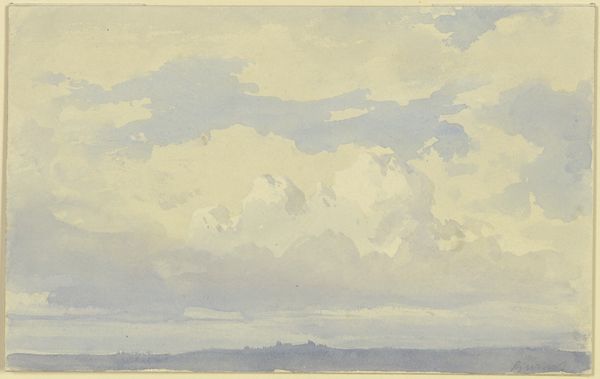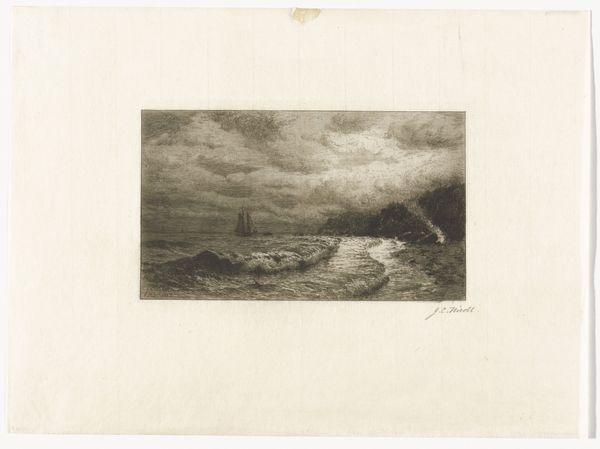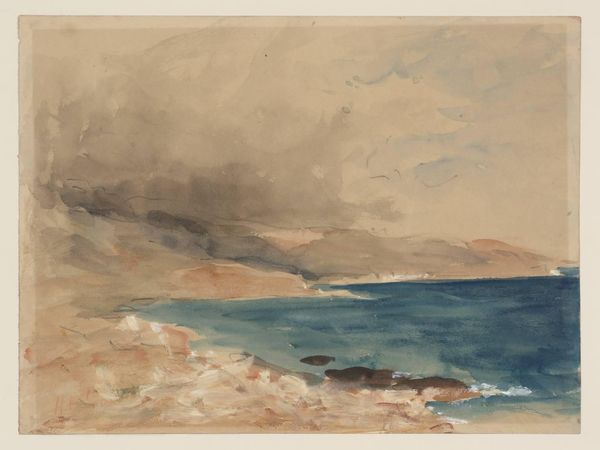
watercolor
#
landscape
#
watercolor
#
romanticism
#
abstraction
Dimensions: 7 3/16 × 11 3/8 in. (18.26 × 28.89 cm) (sheet)18 3/8 × 23 5/8 × 1 1/2 in. (46.67 × 60.01 × 3.81 cm) (outer frame)
Copyright: Public Domain
Editor: This is J.M.W. Turner's "A Storm at Sea," made sometime between 1819 and 1831. It’s a watercolor, currently at the Minneapolis Institute of Art. I’m struck by how the loose washes of color create such a powerful sense of chaos and energy. It feels almost abstract, and makes me wonder, what am I really looking at here? How do you interpret this work? Curator: Looking through a materialist lens, this watercolor offers so much more than just a representation of a storm. It’s not only about what he depicts but also how Turner depicts it, specifically by using watercolor. Consider the implications of that choice, considering its accessibility as opposed to oils for example. How does that impact who might engage with this art form? Editor: So you're saying the choice of watercolor itself carries meaning? Because it’s less expensive and therefore maybe speaks to a different social class or accessibility? Curator: Exactly! Turner’s skilled manipulation of this humble material elevates it, challenging the traditional hierarchy between "high art" and craft. The translucence and fluidity of the watercolor allow him to capture the ephemeral nature of the storm itself, but think also of the consumption practices tied into color production at the time. Editor: I see! The creation of the painting becomes intrinsically linked to broader societal structures and trade, even… Curator: Precisely! By focusing on the materials and their origins, we move beyond a simple appreciation of the image. It allows us to interrogate art’s role in wider social, economic, and even environmental systems. What would happen if you research watercolor pigment availability during his life? Editor: This definitely opens up a new perspective on analyzing art! It’s less about beauty and more about…production and context. Curator: It allows us to see Turner's artistic choices as deeply embedded in a complex web of social and material relations. Hopefully now you'll appreciate and apply these questions throughout this journey.
Comments
minneapolisinstituteofart about 2 years ago
⋮
J. M. W. Turner’s ecstatic relationship to sublime nature comes alive as the deft strokes of his brush capture the changes of mood in the varying light of the turbulent scene. This personal notation, which Turner called a “colour beginning,” was not meant for public dissemination and borders on pure abstraction. Its open center evokes Turner’s spiritual interpretation of light. Far removed from the tightly executed, picturesque works that typified British watercolors of the early 1800s, Storm at Sea, presages the freedom, immediacy, abstraction, and mysticism that became central to art produced by later generations. We do not know precisely when Turner executed Storm at Sea, but in all likelihood he used it to give structure to his oil painting, Staffa, Fingal’s Cave, 1831-32. Turner may have painted Storm at Sea years earlier than the oil.
Join the conversation
Join millions of artists and users on Artera today and experience the ultimate creative platform.
